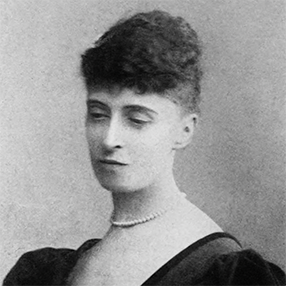To a Daisy
Slight as thou art, thou art enough to hide,
Like all created things, secrets from me,
And stand a barrier to eternity.
And I, how can I praise thee well and wide
From where I dwell—upon the hither side?
Thou little veil for so great mystery,
When shall I penetrate all things and thee,
And then look back? For this I must abide,
Till thou shalt grow and fold and be unfurled
Literally between me and the world.
Then shall I drink from in beneath a spring,
And from a poet’s side shall read his book.
O daisy mine, what will it be to look
From God’s side even of such a simple thing?
This poem is in the public domain. Published in Poem-a-Day on March 25, 2023, by the Academy of American Poets.
“To a Daisy” appeared in Alice Meynell’s first collection, Preludes (Henry S. King & Co., 1875). In “‘The Tides of the Mind’: Alice Meynell’s Poetry of Perception,” Maria Frawley, chair of the department of English at George Washington University, writes that “the speaker of ‘To a Daisy,’ an early sonnet, sees in the flower a kind of secrecy akin to the solitude so often represented in poems about individuals, but the poem progresses to foreground the perspective of the poet, who stands, according to the poem, ‘upon the hither side.’ [. . .] Asking first ‘when shall I . . . then look back,’ and later ‘what will it be to look,’ the poem juxtaposes the relativity of the poet’s temporal perspective to the spatial (through its references to the daisy standing ‘between me and the world’ and the promise that the poet will ‘drink from in beneath a spring’). Ultimately the temporal and spatial are united through reference to the ‘hither side,’ the ‘poet’s side,’ and ‘God’s side,’ which cumulatively enable Maynell to underscore variations of perspective within the poem more generally.”

